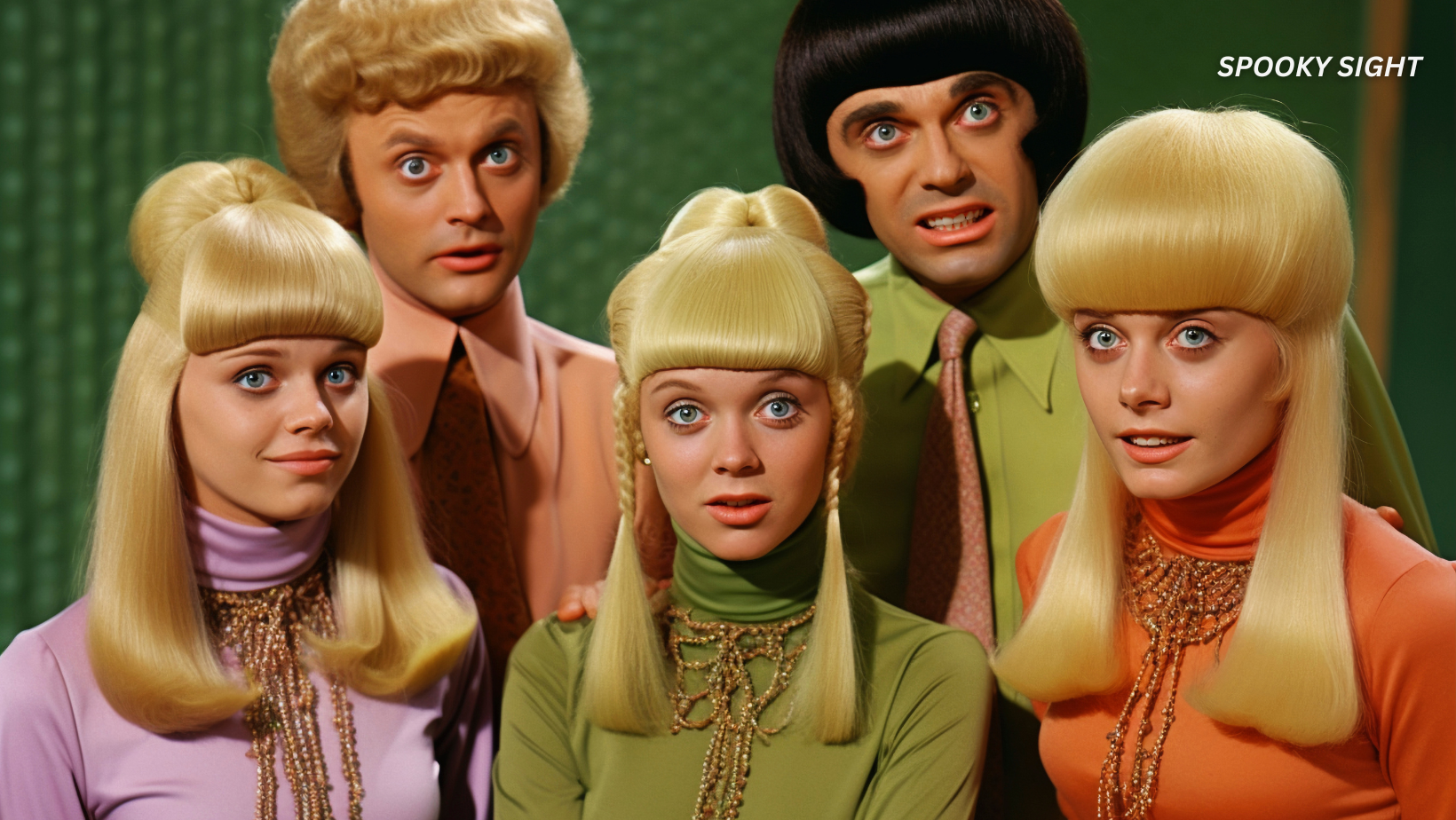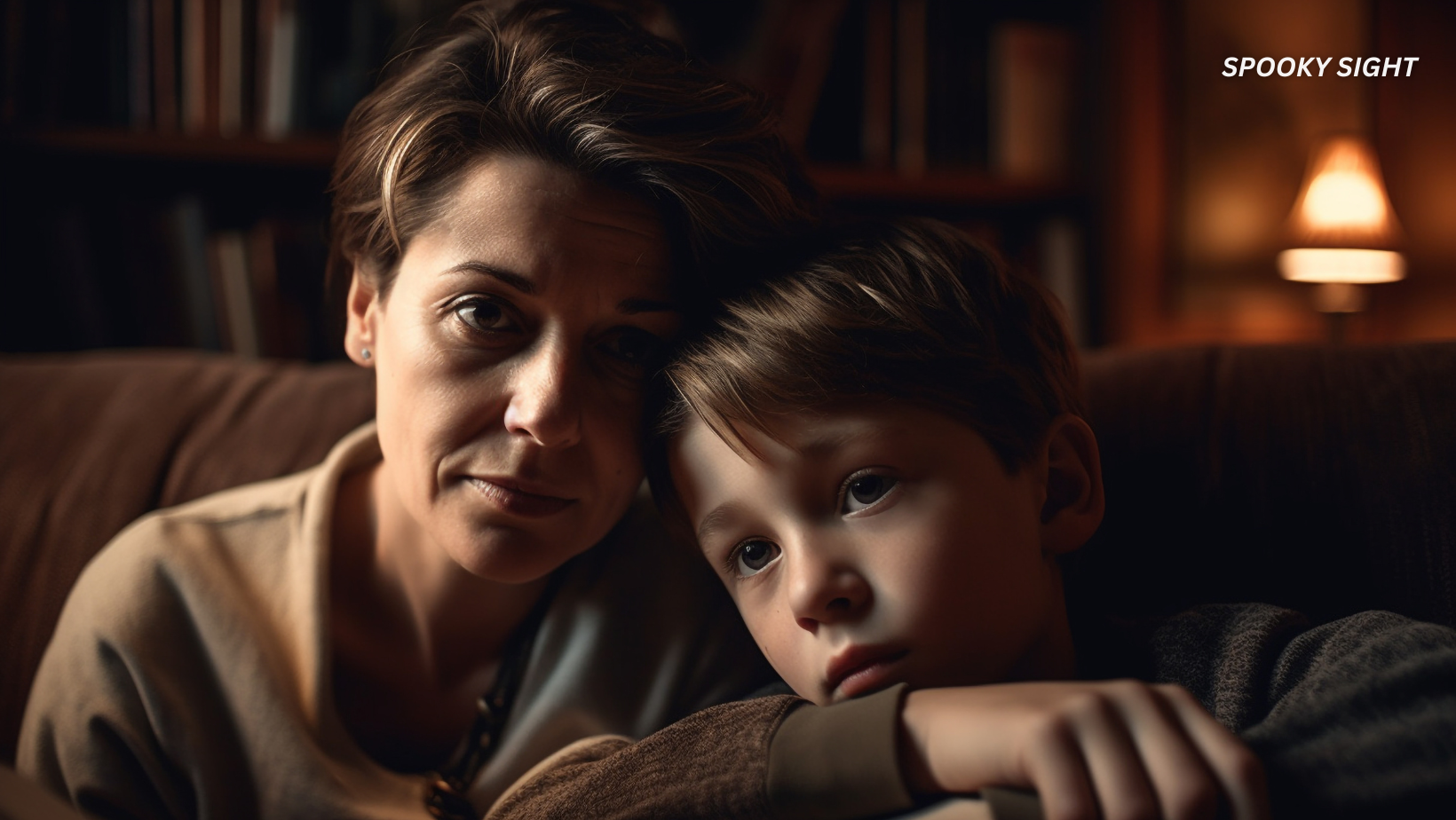In Japanese folklore, Noh masks are more than just theater props—they’re powerful symbols steeped in centuries-old tradition.
Each mask carries its own aura, its own spirit. But among them, there’s one that stands out, a cursed Noh mask that has inspired countless horror stories. A mask that whispers through time, haunting those who dare to cross its path.
Curious? Let’s dive into this chilling tale and uncover the dark secrets behind the most infamous Noh Mask horror story ever told.
In this article:
The Cursed Noh Mask Horror Story
According to this Noh mask horror story, sometime around the year 1500, a wandering artisan named Kaito drifted into a secluded village nestled in the mountains near Nagano, Japan.
No one knew where he came from, and frankly, folks didn’t ask too many questions—strangers were a rarity, but not unheard of. Kaito was quiet, kept to himself, and set up a small workshop on the outskirts of town.
He was a master woodcarver, or so they said. But there was this eerie vibe about him that people just couldn’t shake.
One morning, Kaito went deep into the infamous Aokigahara (Suicide Forest) nearby. The place was notorious—people said it was haunted by spirits, and you couldn’t pay most folks to set foot in there.
But Kaito wasn’t like most folks. He was searching for the perfect piece of wood for his next project.
And as he meandered through the twisted trees, he stumbled upon an ancient, almost entirely rotten tree. It was massive, gnarled, and looked like it had been there since time immemorial.
He carefully approached the tree. And he felt something. Like a chill down his spine. He could’ve sworn he heard whispers, too. Faint voices carried by the wind.
At first, he thought it was just the breeze rustling the leaves, but then the whispers grew louder, more insistent. He could hear them clearly. The voices were calling his name.
Kaito felt drawn to the tree, almost like it had its own gravitational pull. Without thinking twice, he decided this was the wood he needed.
He chopped down the tree and hauled the wood back to his workshop. From that day on, Kaito became a recluse. Day and night, he labored relentlessly, carving a Noh mask unlike the world had ever seen.
Weeks turned into months. The villagers noticed the lights in his workshop never went out. Some swore they heard strange noises—scratching sounds, muffled voices, even laughter when no one else was around.

A Mask Like No Other
After one full year of obsessive work, Kaito finally completed the mask. It was simple yet mesmerizing. The wood seemed to glow with an inner light.
But the most striking feature was how the mask’s expression changed depending on the angle you looked at it. From one side, it exuded pure joy, but shift a little, and it transformed into utter despair. Tilt it another way, and you could see rage, love, jealousy—every human emotion imaginable was captured in that one piece of wood.
Related:
- Horror Stories: The Russian Sleep Experiment
- The Crying Boy: The Painting That Survived Fires—But Is It Really Cursed?
- The Ultimate Ghost Hunting Equipment Checklist: What the Pros Use and Why
Overwhelmed by his creation, Kaito decided to try it on. As soon as the mask touched his face, a blood-curdling scream echoed through the village.
Some fishermen nearby rushed to his workshop, but it was too late. They found him lying on the floor, the mask still on his face. When they removed it, they recoiled in horror.
His face was twisted in a grotesque expression of pain and terror. His skin was rotten, and he looked like he’d aged a hundred years. Kaito was dead—his life force completely drained.
The Mask’s Next Victim
A bunch of villagers gathered around Kaito’s shop. They were all terrified. However, one of them, a man named Taro, couldn’t resist the pull. He reached out and took the Noh mask.
At first, Taro’s life took a turn for the better. His failing crops started to flourish, and he even found a small stash of gold coins buried on his property.
But soon, things went south—fast.
He started to experience insomnia, nightmares, and a constant feeling of being watched. Within a month, Taro was found wandering the streets, muttering incoherently before collapsing and dying just like Kaito.

Can you Destroy the Evil Noh Mask?
You don’t have to be a genius to realize that something was off with that Noh mask. So, some of the villagers tried to destroy it.
They threw it into a raging fire, but the flames didn’t leave a single scorch mark. They attempted to smash it with hammers, but the tools shattered upon impact. Desperate, they tossed it into the river, hoping it would wash away. But the next morning, the mask was sitting on the steps of the village shrine, dry as a bone.
Not knowing what else to do, they left the mask where it was. But here’s the thing: the cursed Noh mask needs an owner. Without one, terrible plagues hit the entire village. Unexplained fires destroyed their crops, fish died in the river, and a weird sickness wiped out their animals.
People were desperate. Until one day, some travelers from the East happened to get lost and stumbled upon the secluded village. It was the perfect chance for the villagers to ditch the cursed mask.
And so they did.
They invited the travelers to stay overnight and offered them a grand feast with all the food they had left. Then, they exchanged gifts. The travelers offered spices, and the villagers handed over the Noh mask.
As soon as the travelers hit the road, guess what? The bad luck stopped—just like that. No more plagues, fires, floods, or dead animals. Life in the village got back to normal. Crops grew, animals thrived, and the river teemed with fish again. It was like a dark cloud had finally lifted.
SpookySight recommends:
- Horror Stories: The Ghosts of Nam Koo Terrace
- Japanese Horror Stories: The Red Room Curse (Akai Heya)
- The True Story of Hanako-san: Japan’s Ghost in the Bathroom
But as for the travelers? No one really knows what happened to them after they took the Noh mask. Did they suffer the same misfortunes? Did they pass the curse to others?
Interestingly, some claim this Noh Mask horror story doesn’t end here. And over the centuries, the mask changed hands countless times.
It appeared in Kyoto during the Onin War, was rumored to have been in Edo during the great fire of 1657, and some say it even made its way to Hiroshima before the tragic bombing in 1945.
Different owners, different places. But with the same pattern: good fortune followed by unexplainable accidents, sickness, and, ultimately, death.

Beware What You Bring Home
There are many versions of this Noh Mask horror story. However, many think that all these legends share some common ground. Perhaps they are inspired by actual events?
Some theorized that the wood from which the Noh mask was carved came from a tree possessed by a yōkai (a malevolent spirit from Japanese folklore). Others believed it was the work of a tsukumogami—an object that gains a soul after existing for 100 years.
But none of these theories could explain why the mask can’t be destroyed or its insatiable hunger for life energy.
Today, Noh masks are a dime a dozen in Japan. You can find them in tourist shops from Tokyo’s Asakusa district to the street markets of Osaka. They’re popular souvenirs, cherished for their cultural significance and artistry.
But here’s the kicker—some still believe that among these thousands of masks, it’s also the cursed one.
There’s a story about a tourist named Emily Parker from Seattle who visited Japan in April 2019.
While exploring Kyoto’s Gion District’s narrow, winding streets, she stumbled upon a quaint little shop tucked between a tea house and a calligraphy store. Inside (amidst a collection of antiques and trinkets) she felt inexplicably drawn to a simple wooden Noh mask. It wasn’t flashy or ornate—just a plain mask that seemed to call out to her.
Plus, the shopkeeper seemed eager—too eager—to sell it. He offered it at a price way below what she’d expect for such craftsmanship.
“It’s a special piece,” he said with a strange smile. Thinking she’d scored a fantastic deal, Emily bought the mask and tucked it into her backpack.
Back home in Seattle, strange things started happening.
Emily began experiencing vivid nightmares and a constant feeling of being drained. She felt like she could sleep for days and still wake up exhausted.

At first, she chalked it up to jet lag, but as weeks went by, her condition only worsened. She started seeing shadows moving in the corners of her eyes and heard faint whispers when she was alone.
Suspecting that the Noh mask she bought in Japan might have something to do with it, she tried to get rid of it. She threw it in the trash, donated it to a thrift store, and even drove out to Mount Rainier and left it in the woods.
But no matter what she did, the mask always found its way back—sometimes appearing in the most unexpected places, like on her nightstand or inside her locked car.
The story doesn’t say what ultimately happened to Emily or where the mask is today. Some say she disappeared without a trace; others believe she moved away, hoping to escape the curse.
There are even rumors that her apartment remains vacant, as new tenants report unsettling occurrences.
One thing is for sure: the cursed Noh mask is patient. It doesn’t discriminate. It doesn’t care who you are or where you’re from. It just waits—for the next curious soul, the next unsuspecting victim. It feeds off ambition, greed, and desire, luring people in with the promise of something more.
So, if you ever find yourself strolling through a market in Japan—or anywhere else—and a Noh mask catches your eye, maybe it’s got that certain something you just can’t put your finger on; think twice before reaching for your wallet.
That inexplicable pull you feel might not be just fascination; it could be the mask choosing you.







